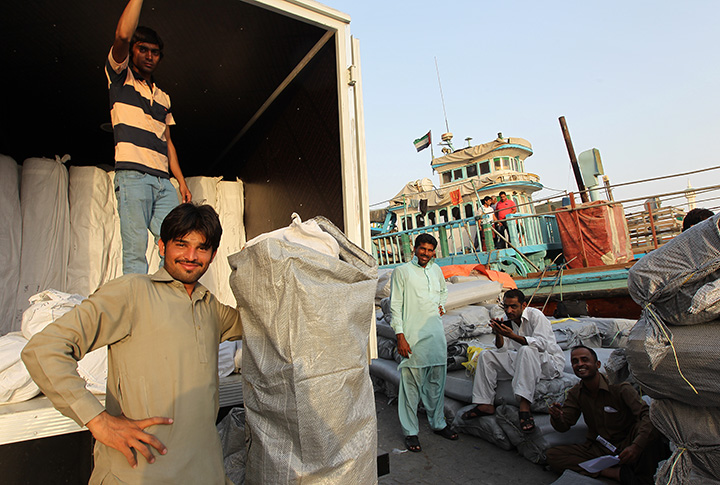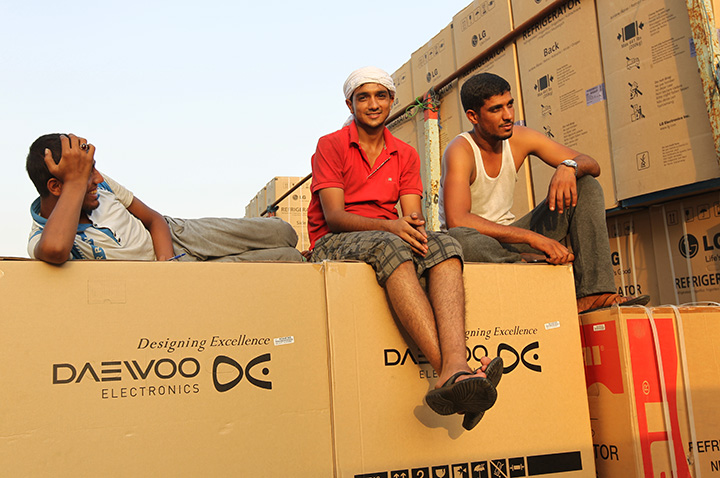One way to test your photographic skills is to take a tight time frame and try to shoot a cohesive photo essay. Robert Keeley explains.
Try this test. Next time you have a spare half an hour (or to make it even more challenging, 20 minutes) set aside the time to try and shoot a cohesive photo essay – a series of images which tell a story about any subject of your choosing.
You might think such an effort is futile or that it can’t be done. But that doesn’t mean it isn’t worth giving it a go. If you think this approach isn’t conducive to good photography, think about news photographers. They often work to deadlines, and frequently they have 20 minutes or less to get images which impress their editors. It can be done.
And such an assignment can be as easy as heading into your back yard, to the local park, or even a family barbeque. For me the chance arose during some recent overseas travel. On a stopover in the rich middle-east city of Dubai, we headed off on a tightly scheduled bus tour. When we got to a the local market, it was next door to the busy port, which had a flotilla of richly decorated working boats, with a range of dockside workers busily loading them up for voyages all over the Persian Gulf.
Our tour organiser gave us 20 minutes to explore the market and buy souvenirs, but to my way of thinking the best souvenir is photos, so I made my way along the dockside, snapping as I went. My objective was to get as many revealing images as I could in the short time I had available. Some of the results are seen here, but it’s important to realise this exercise can be undertaken anywhere. The value lies in putting yourself under pressure, in educating your eye to pick up interesting subject material quickly, and in working out how to shoot it effectively.
If you take photographs regularly, and you undertake this exercise every six months, you might be surprised at how much better you get.
1. FIND AN ESTABLISHING SHOT
As we arrived at the dockside via a small ferry I realised I needed some form of establishing shot to give an overall context to my portfolio. When we crossed the creek to reach the market site I shot a series of on-water images. It was late in the day so the lighting was ideal. As we stepped off the ferry I quickly assessed the situation. I was fortunate the late afternoon light was generally at a favourable angle to my subjects, so I took some shots of the moored boats, and then moved quickly along the shoreside.

An establishing shot for a photo essay should provide an overall feel for the rest of your images. In this example I thought the mix of passenger ferries and cargo boats offered a broad idea of the story.
If you have 20 minutes to make a photo essay, you need to think in an organised way. Work out the theme of the story. Assess the light, calculate the best angles for shots, and prioritize your subject matter. It’s a little like sitting for an exam. Tackle the obvious images first, and if nothing is immediately obvious, move on to your first best idea.
2. SHOOT THE KEY ELEMENTS
What are key elements of your story? If there are people involved, and you don’t control their movements, it might pay to shoot them first, in case they move away. As I walked along the dock I noticed the busy workers and their supervisors. In overseas locations it can be easier to photograph people, especially if you approach them in a friendly manner (I raise my camera and smile!). If they don’t want to have their picture taken they’ll let you know. In this instance I was lucky. The dock workers were quite happy to co-operate. The key is to work quickly. Know your best camera settings, have them ready, and shoot fast. Even co-operative people can lose interest rapidly, especially if they’re working.

As I walked along the dockside I signalled to these workers I'd like to take their photo, and they were happy to co-operate. Shots of people can add depth to a photo essay. Approach people with a smile - they can only say 'no'!

Look for interesting moments to add to your portfolio. Here I noticed this worker checking paperwork, which told part of the dockside story. I moved in close with a wide-angle lens to capture it.

Here I asked these workers who were relaxing whether I could take their photo, and they agreed. Moments like these can add a human element to your series.
Shooting in this way forces you to learn your best shutter speed, aperture, and ISO settings – there are very few second chances! You need to steady your camera, set a usable depth of field like f/8 or f/11, and always take more than one shot to allow for people who might blink.
3. LOOK FOR DETAIL
Having captured a couple of images of the workers, I walked briskly along the wharf checking out the goods being loaded. At one point I noted the flag of a visiting vessel so I framed it with the goods dockside. Interesting and unusual details add extra punch to your portfolio. Searching for them in a short space of time helps to sharp your eye, and your reactions.
Along the dockside I noticed this flag sticking up over the packaged goods awaiting loading. It was a quirky detail which added to the mix of images in the photo essay.
4. DON'T WORRY, KEEP SHOOTING!
When the pressure is on, even the best press photographers occasionally fail to come back with a great shot. You simply can’t take good photos all the time. I had one idea to take a ‘grab’ shot as I walked past some busy workers. It didn’t pan out, largely because it blurred as I moved by. It doesn’t mean the idea was bad (I used it successfully on other occasions throughout my trip), but my execution was poor. And it didn’t matter; time was short so I pressed on and looked for another image, which I soon took. 
I took several images of this deckhand, along with some of his colleagues. Some didn't work, but I persisted in shooting a few different compositions. I was satisfied with this image conveying the bulk of goods these small wooden vessels were carrying.
Every great photographer has made images they’re not happy with. In fact the best shooters might arguably take more ‘duds’ than the rest of us, because they shoot a lot more. But they have also trained their eye to recognise the poor ones and continue the search for a better one. If you shoot within a tight time frame, you will take some poor shots as well, but you will soon educate your eye to spot them, which is another advantage in taking this approach.
As with most things in life, you won’t succeed every time you try something new. That doesn’t mean it’s not worth trying. Putting yourself under pressure with your photography can bring surprisingly significant improvements in the long run. So next time you find yourself with a spare half an hour, use it productively to tell a photographic story. The benefits to your photography might be more than you expect.
Here I was looking to show the busy, semi-organised, and hectic nature of the dockside.
Whilst on the water I took another possible establishing shot to illustrate the busy nature of the river traffic. Because of the tight schedule of our guided tour, I completed this exercise in 20 minutes. It's worth trying the same approach with a subject of your own every so often to test yourself.











